Utensils |
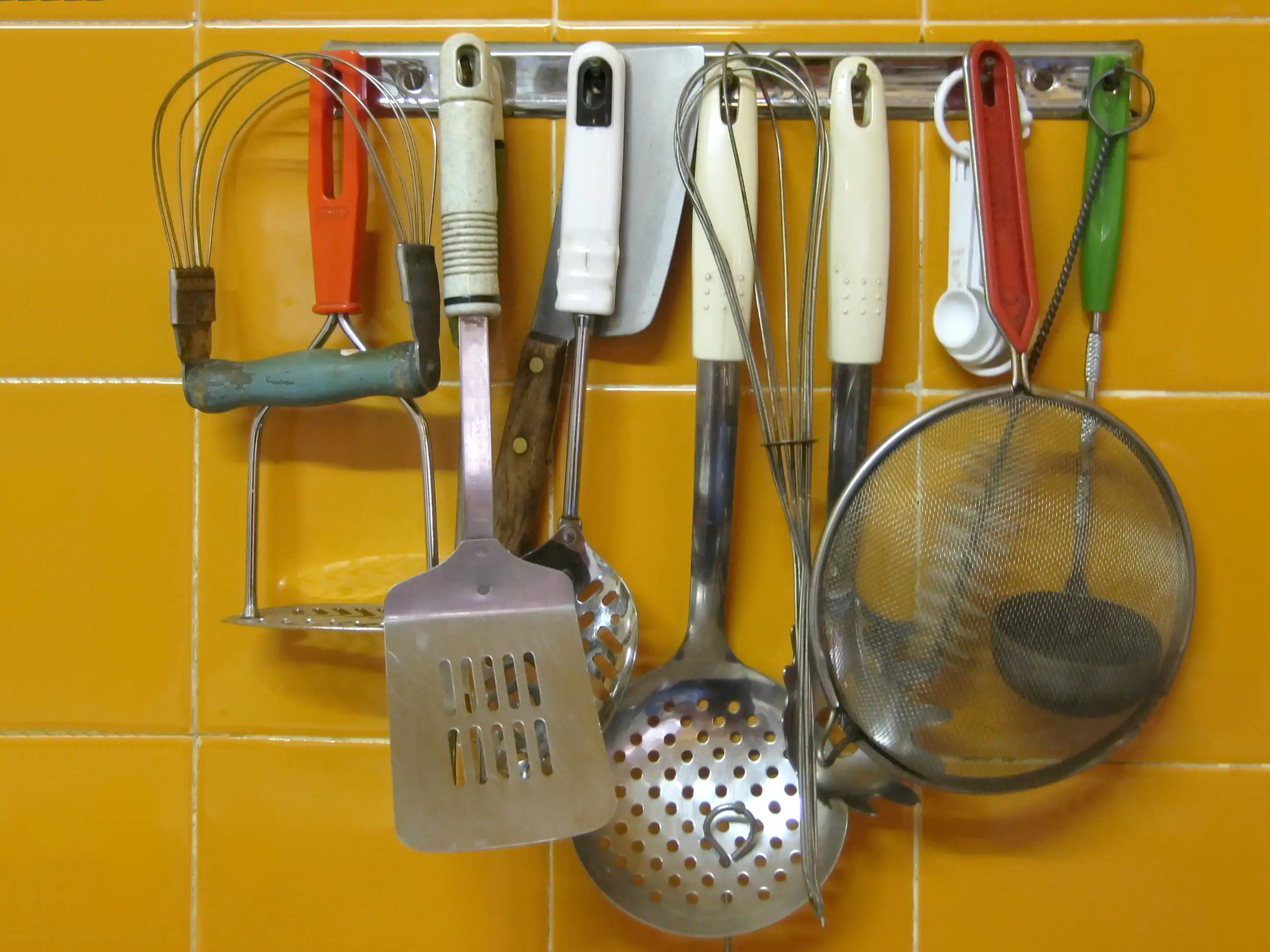 Kitchen utensils-01 |
Hand Tools
Kitchen hand tools are small, hand held tools that aid in cutting, slicing, stirring, combining, moving and serving. They usually have no or very few moving parts. Hand tools should be selected for sturdiness, durability and safety.
Knives are probably the most important and most used as well as the most expensive of kitchen hand tools. We have dedicated an entire chapter to knives.
Here are a few common hand tools:
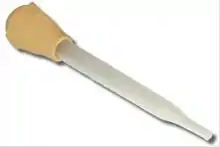 Baster
Baster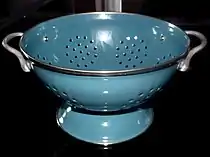 Colander
Colander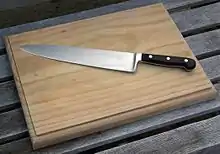 Chopping Board
Chopping Board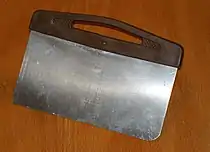 Dough Bench Scraper
Dough Bench Scraper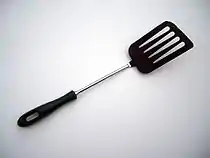 Spatula
Spatula_Sieve%252C_Flour_Sifter.JPG.webp) Sieve, Flour Sifter
Sieve, Flour Sifter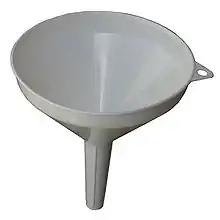 Kitchen Funnel
Kitchen Funnel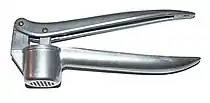 Garlic press
Garlic press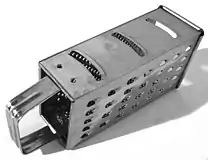 Cheese grater, Shredder
Cheese grater, Shredder Lame for bread slahing
Lame for bread slahing.jpg.webp) Honey dipper
Honey dipper Ladle
Ladle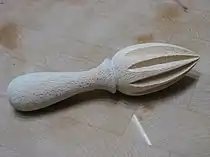 Lemon reamer
Lemon reamer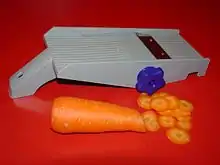 Mandolin
Mandolin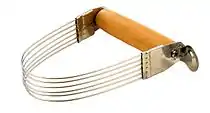 A handheld pastry blender
A handheld pastry blender Kitchen Brush
Kitchen Brush Mortar and Pestle
Mortar and Pestle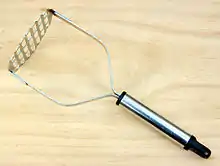 Potato Masher
Potato Masher Rolling pin
Rolling pin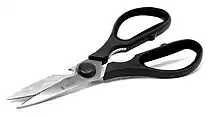 Kitchen Scissors
Kitchen Scissors
The list of hand tools used in the kitchen is seemingly endless. Stick to the what you need for the kind of cooking you do. Add new ones carefully to avoid a drawer full of tools you don't need. "Time saving gadgets" are usually single purpose tools whose cost far exceeds their usefulness. For example, a mandolin is very useful if you slice a lot of vegetable frequently or you have a need for uniform slices for appearance, however, the time getting it out, setting it up and cleaning after use is not time very well spent if you are making a single salad.
Measuring And Portioning Devices
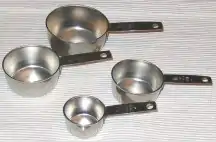 MeasuringCups 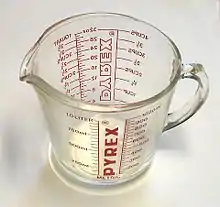 Measuring cup 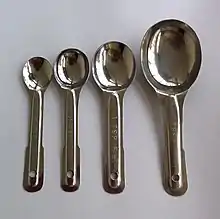 61 - IMG 20150816 112616 In following recipes it is essential that you have the means to make exact measurements. There are two common systems of measurement, imperial and metric. In the US the imperial system is common. In most of the rest of the world metric is more common. Unfortunately, there appears to be no trend for the US to follow the rest of the world and go metric. It is a simple calculation to go from one measurement to another though if the recipes you use are as likely to be in imperial as in metric then it is probably easier and more accurate to have set of measuring spoons and cups of each system. Volume MeasuresNote the difference in the measuring cup in the pictures to the right. The top one is for dry ingredients and the second is for liquid measurements. Dry measurements are usually made by scooping the ingredient so it is rounded above the spoon or cup then scrapped flat with the back side of a knife. Most dry ingredients are not packed to be measured. Brown sugar is typically packed tightly to remove any air pockets. Shredded cheese should be lightly packed. Fluid measurements should be made with a transparent cup. While the actual volume is the same for both dry and wet measurements, filling a dry measuring cup to the brim with liquid would be quite messy. Likewise it would be difficult to get top dry ingredients flat enough in a wet measuring cup to be accurate. (For a culinary lesson in measuring check out the YouTube video "New Orleans Cajun, Justin Wilson - Gumbo" and all the rest of his videos if you have time.) Measuring spoons usually come in a set of 4 or 6 and usually the smallest is a 1/4 teaspoon measure. If you can find it get a set with a 1/8 teaspoon measure. Though the shape of the spoon does not matter for measuring the kind where the scoop part is long and narrow fits into small spice jars much easier. I find I like the stainless steel ones much better than plastic ones. ScalesA scale in the kitchen is essential for more precise recipes. Some recipes, especially in baking, provide measurements in weight instead of volume to compensate for any packing that may have occurred in the ingredient. A small digital scale is the most convenient. Features to look for are:
|
Thermometers
One of the main reasons for cooking your food is to kill the bacteria that causes food-borne illness. The thermometer is the only way to be sure your food has reached the proper temperature.
| Type | Description | Use |
|---|---|---|
| Bimetallic dial | The mechanism is mechanical and can loose its accuracy over time. | Probed type are for internal readings. |
| Digital readout with a thermocouple probe | Single probe with a digital readout on the end. | Measure internal temp. |
| Digital readout with a corded thermocouple probe | Corded probe can remain in the food in the oven while cooking and is attached to an external digital readout. | Measures internal temp. |
| Candy thermometers | Glass bulb type useful for candy making. Highly accurate at high temperatures. | Measures liquid temp. |
| Infrared gun | Laser beam that measures food temperature without touching it. This is especially useful for checking for proper serving temperature. | Measures surface temp. |
The regular digital probe thermometers are for instance readings. The digital thermometers with a corded probe allows you to monitor of your food while its in the oven and usually has the capability to sound an alarm when a set temperature is reached. These are especially useful for slow cooking meat whether in the oven or on an outdoor grill. There are now thermometers that replace the cord with a bluetooth transmitter but that means having electronics in the hot oven which is not a good environment for electronics. While the cord is a hassle sometime, I'm in a wait and see mode for that. And as with everything else electronic now days some communicate with a smart phone app.
Bimetallic thermometers are available that stay in the oven to monitor the actual temp in the oven in case you fear your oven is cooking hotter or cooler than it is reporting.
Portioning utensils
Ladles
Portion Scoops
Strainers And Sieves
- Chinois And China Cap
- Skimmer And Spider
- Cheesecloth
- Food Mill
- Flour Sifter
Processing Equipment
- Slicer
- Mandolin
- Food Chopper Or Buffalo Chopper
- Food Processor
- Blender
- Immersion Blender
- Mixer
- Whipping Siphon